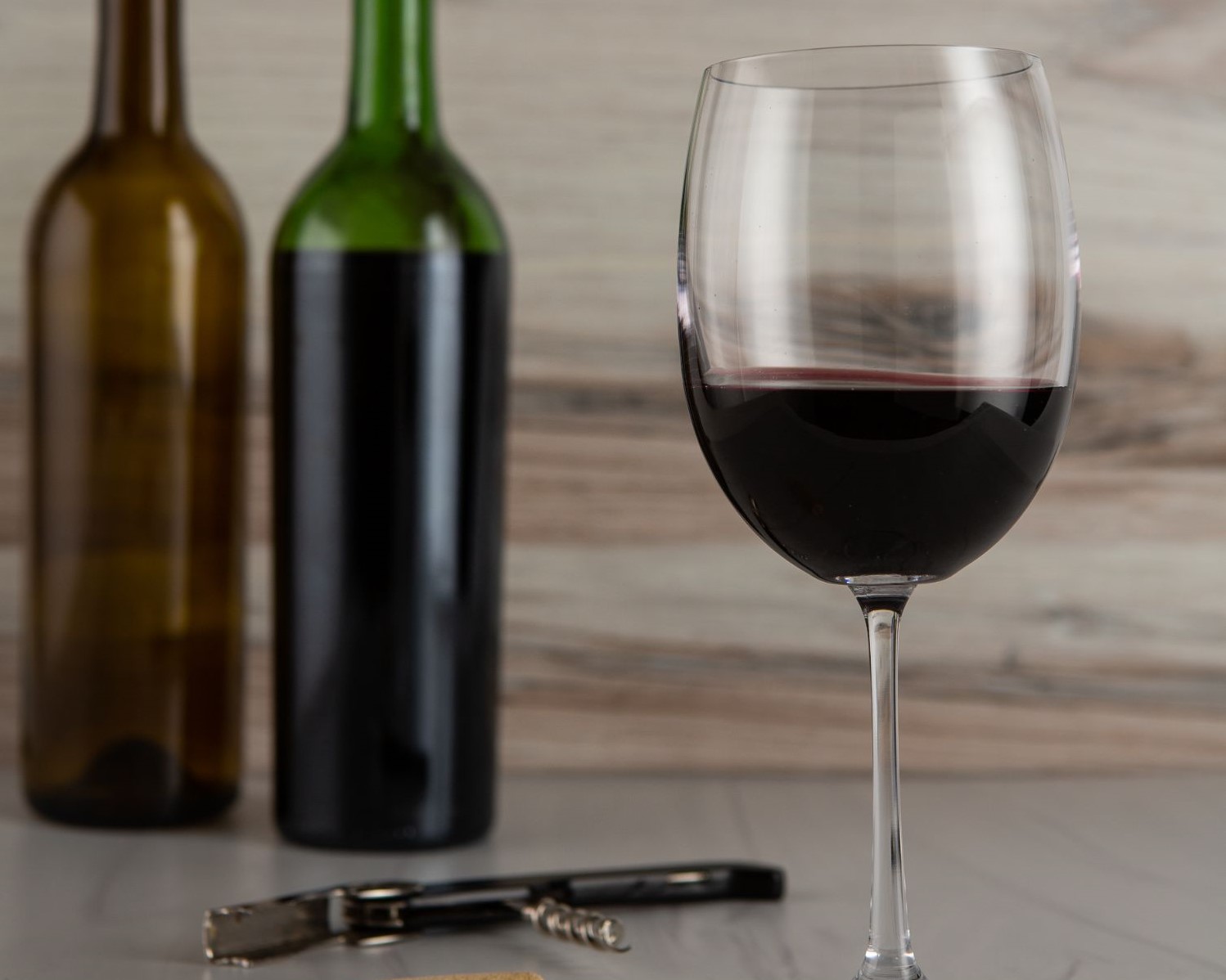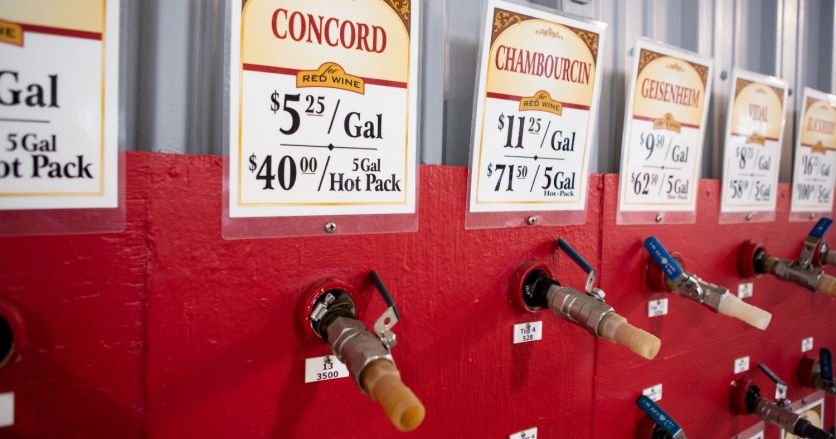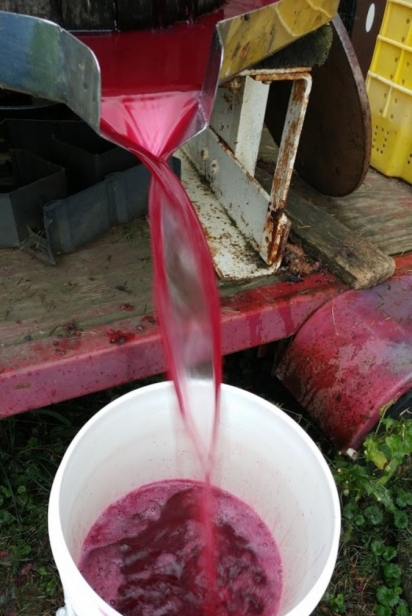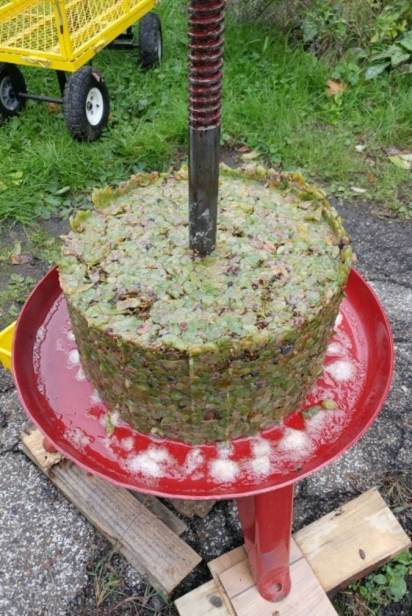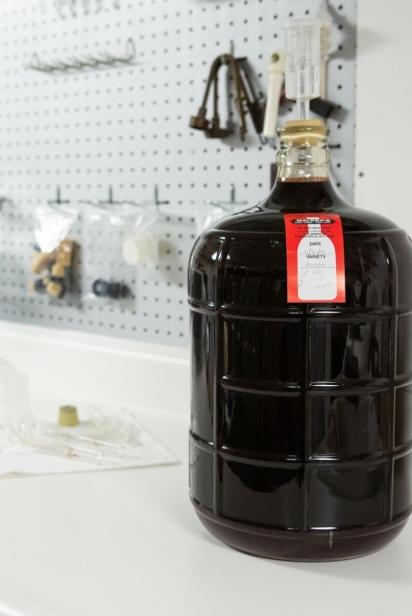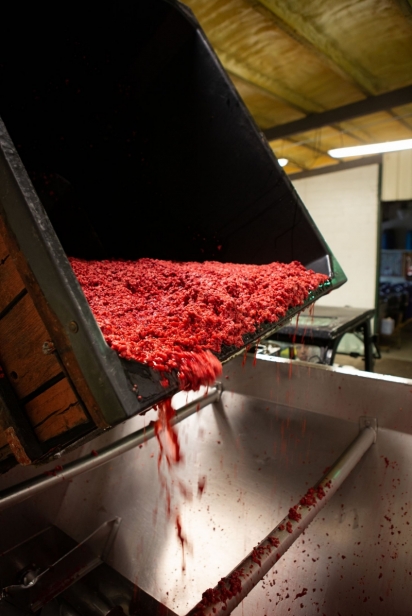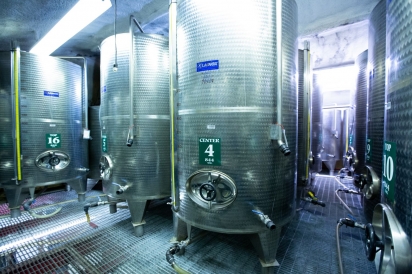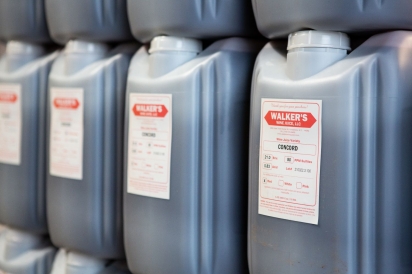Home Winemaking
A time-honored tradition for generations, home winemaking has evolved considerably. Rick Walker, co-owner of Walker’s Wine Juice of Forestville, one of the largest juice producers in the region, has seen the process and materials change over the last several decades, and the “typical” winemaker—formerly of Italian and Portuguese ethnicity—now comes from every walk of life.
While the pandemic had an unfavorable effect on many things food and drink, home winemaking enthusiasts across southwestern New York continued to indulge their hobby, with 2020 seeing increased sales in juice and winemaking supplies. Retail Sales Manager Tammie Walker, Rick's wife, says many winemakers have resumed the hobby after years of absence. “We definitely saw an increase in juice sales last fall,” she notes. “Customers were coming in and saying, ‘you know, I haven’t made wine in years, but with all this downtime, I need a hobby so I’m back into it.’”
In the 1970s, winemakers were mostly fermenting juice in wooden barrels, 50 gallons at a time. Back then, Rick notes, “the average customer came in a pickup truck; now it’s an SUV filled with carboys.” Customers were also happy with the five or six juice varieties that were available. Walker’s now has a choice of 40 varieties and seven different types of fruit for flavored wines. “Everyone is making much smaller batches, but more varieties,” he explains.
Today’s winemaker has increased knowledge of the process and tends to be much more “scientific,” Rick adds. “There are some people who are very particular about acid, alcohol content and pH levels and we sell instrumentation to help fine-tune their process.”
Matt Ebling of Fredonia has been making wine at home for over 18 years, producing 30 to 70 gallons annually. He tests for both sugar and acidity levels. Since he sometimes starts with grapes that he stems and presses, rather than juice, he uses an instrument called a hydrometer, which tests for “specific gravity,” measuring how much sugar is already in the natural juice, so that he knows how much more to add. This ensures that there will be a specific alcohol content (ideally 11 or 12 percent) when the yeast ferments all the sugar. Alcohol content is also important as it naturally preserves the bottled wine.
The hydrometer, Ebling says, is a very simple instrument. “It just floats (in the liquid) and depending on how high, it tells you the specific gravity of that liquid.” A gravity measurement of 1.085 equals about 21 brix, which is the sugar content considered ideal in juice for winemaking. “This makes it easier for the home winemaker, especially in those years when grapes might have a lower sugar level.” He adds that some juice sellers may already adjust the sugar and acid levels.
Acid Blend is a product Ebling uses to bring wine up to the correct acidity needed for yeast fermentation, although he clarifies the “correct” acid amounts may differ depending on whether the wine made is red or white.
Rick Walker says his early customers thought it was bad to put sugar in the juice, that what occurred naturally was enough. However, unlike California grapes, he says, Eastern varieties do not have enough sugar vital to alcohol production.
Whether the home winemaker prefers dry or sweet, sugar is almost always added at the beginning of the process. Since it is consumed by the yeast, it will still produce a completely dry wine. For a sweeter wine, home brewers add a sugar syrup before bottling.
Ebling says, “Personally, my friends and I generally like a good, sweet wine made from local grapes.” Often referred to as “foxy” for their distinctive, tangy flavor, the pungent, fruity taste of these wines is complemented by the sugar, he believes.
Many local winemakers seek a change from the ubiquitous California wines and Walker’s juices fit the bill. “Where the climate is too hot, wines don’t develop the character, so winemakers look to our product as a supplement.” Walker sells 1.5 million gallons of juice annually; 100,000 of that to home winemakers and the rest to 500 commercial wineries, most east of the Mississippi but some farther west.
Rick and Tammie Walker both agree that among local varieties, Concord is hands-down the most popular. “It’s the area we live in,” Tammie states. “Concords are everywhere. It’s what you smell in the fall … it is Western New York.” Other favorites are Catawba and Diamond—the latter being somewhat less known, and Isabella—an old standby, Rick says, which came over to the New World with the monks.
Many people who try winemaking as a novelty then branch out and enjoy experimenting with different flavors and techniques. “Like the fashion industry, winemaking can be trendy,” Rick says, adding “new wines or flavors attract people who may start with a Chardonnay one year and then buy peach juice and have peach Chardonnay the next.”
Other flavors include blackberry, cranberry, pomegranate, red raspberry, strawberry and even rhubarb—a favorite in northern climates or wherever strawberry festivals are popular. Ebling says that he has also made wine from local flowers, including viburnum.
For the beginner winemaker, one of the first decisions is determining which of the many juices to use. “If someone tells us what they typically like to drink we can go from there,” Tammie states. “We see first-time winemakers every year who say, ‘I’m new to this. What do I need to get set up?’ We walk them through the whole process and tell them what supplies they need to buy.” The Walkers will also help winemakers when questions or problems arise with their home brews.
As almost all winemakers can attest, the little know-how and experimentation required reaps many rewards which come with the pride of producing the wine itself.


